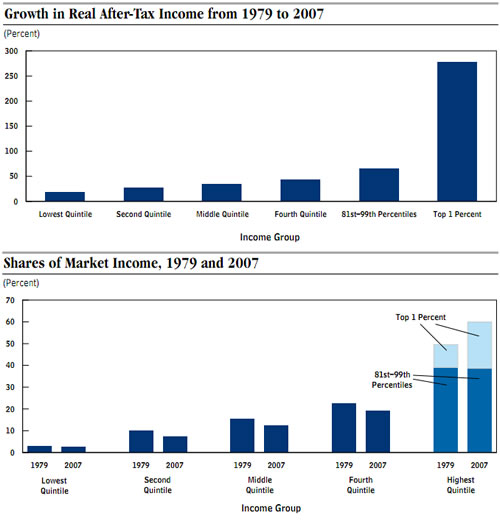The Poor not so much

According to a newly released report on real (inflation-adjusted) average household income in the United States by the non-partisan Congressional Budget Office, the answer is almost three times as rich:
For the 1 percent of the population with the highest income, average real after-tax household income grew by 275 percent between 1979 and 2007 (see Summary Figure 1).The Top One-percenters also have the lionshare of the growth of total market income:
As a result of that uneven growth, the share of total market income received by the top 1 percent of the population more than doubled between 1979 and 2007, growing from about 10 percent to more than 20 percent. Without that growth at the top of the distribution, income inequality still would have increased, but not by nearly as much. The precise reasons for the rapid growth in income at the top are not well understood, though researchers have offered several potential rationales, including technical innovations that have changed the labor market for superstars (such as actors, athletes, and musicians), changes in the governance and structure of executive compensation, increases in firms’ size and complexity, and the increasing scale of financial-sector activities.But is bemoaning the good fortunes of the super-rich the right thing to do? After all, the second part of the proverb "the poor get poorer" is actually incorrect: for the bottom 20% of the population, the average real after-tax household income increased by 18% over the past three decades. It seems like the poor also got a little bit richer.
Perhaps we should change the proverb to "the rich get richer and the poor get a little bit richer"?
Source: Trends in the Distribution of Household Income Between 1979 and 2007 [PDF] by the Congressional Budget Office

No comments:
Post a Comment